-
 Bitcoin
Bitcoin $84,293.8118
2.92% -
 Ethereum
Ethereum $1,812.6156
1.61% -
 Tether USDt
Tether USDt $0.9995
-0.01% -
 XRP
XRP $2.1300
3.96% -
 BNB
BNB $598.0731
1.81% -
 Solana
Solana $122.5476
6.46% -
 USDC
USDC $0.9999
0.00% -
 Dogecoin
Dogecoin $0.1697
6.92% -
 Cardano
Cardano $0.6614
3.58% -
 TRON
TRON $0.2399
1.67% -
 UNUS SED LEO
UNUS SED LEO $9.4721
0.87% -
 Chainlink
Chainlink $12.9918
2.93% -
 Toncoin
Toncoin $3.3918
-5.15% -
 Stellar
Stellar $0.2593
0.64% -
 Avalanche
Avalanche $18.1424
0.54% -
 Sui
Sui $2.2723
2.26% -
 Shiba Inu
Shiba Inu $0.0...01227
0.72% -
 Hedera
Hedera $0.1657
3.27% -
 Litecoin
Litecoin $84.4108
2.68% -
 Polkadot
Polkadot $4.0452
0.41% -
 MANTRA
MANTRA $6.2735
-2.26% -
 Bitcoin Cash
Bitcoin Cash $299.8507
1.71% -
 Bitget Token
Bitget Token $4.5438
1.99% -
 Dai
Dai $1.0001
0.01% -
 Ethena USDe
Ethena USDe $0.9992
-0.03% -
 Hyperliquid
Hyperliquid $11.9337
5.81% -
 Monero
Monero $215.5583
2.77% -
 Uniswap
Uniswap $5.9113
3.01% -
 Pi
Pi $0.5297
-9.83% -
 NEAR Protocol
NEAR Protocol $2.4929
1.07%
How does the mining income of cloud computing power mining platform be related to mining pool allocation?
The allocation of mining pools significantly impacts the income of cloud computing power mining platforms by affecting reward distribution and operational consistency.
Apr 02, 2025 at 01:56 am
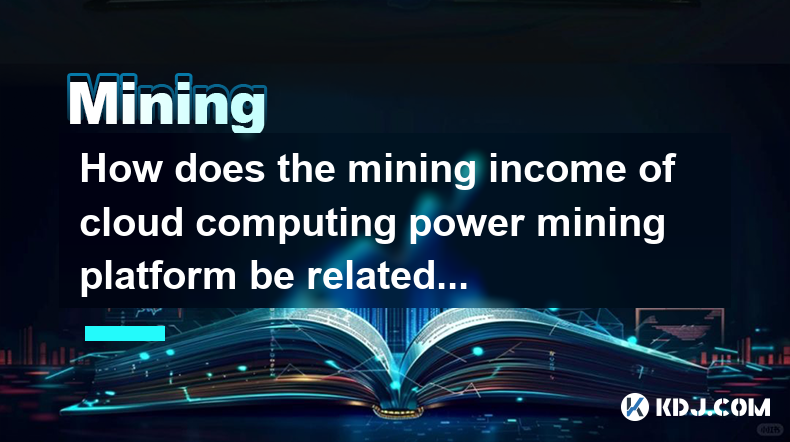
The relationship between the mining income of a cloud computing power mining platform and the allocation of mining pools is a crucial aspect of cryptocurrency mining. Mining income is influenced by various factors such as the efficiency of the mining hardware, electricity costs, and the specific cryptocurrency being mined. However, the allocation of mining pools plays a significant role in determining the consistency and potential profitability of the mining operation. Mining pools are groups of miners who combine their computing power to increase their chances of solving the cryptographic puzzles required to mine new blocks. The income from these pools is then distributed among the participants based on their contributed hash rate.
Understanding Mining Pools and Their Allocation
Mining pools are essential for miners who might not have enough computing power to mine blocks on their own. By joining a pool, miners can share the rewards more consistently, albeit in smaller amounts. The allocation of mining pools refers to how the total reward from a successfully mined block is distributed among the pool members. This allocation is typically based on the proportion of hash power each miner contributes to the pool. Different pools may use different methods for allocation, such as Pay Per Share (PPS), Proportional, or Score-based systems. Each method has its own advantages and can affect the miner's income differently.
Impact of Pool Allocation on Mining Income
The method of pool allocation directly impacts the mining income of a cloud computing power mining platform. For instance, in a PPS system, miners receive a fixed amount of cryptocurrency for each unit of hash power they contribute, regardless of whether the pool successfully mines a block. This can provide a more predictable income stream, which is beneficial for cloud mining platforms that need to manage their financials carefully. On the other hand, proportional systems distribute rewards based on the number of shares contributed by each miner during the round in which a block is found. This can lead to higher variance in income but potentially higher rewards if a block is mined quickly.
Cloud Computing Power Mining Platforms and Pool Allocation
Cloud computing power mining platforms lease computing power to users, allowing them to mine cryptocurrencies without the need for personal hardware. The income these platforms generate is directly tied to the efficiency and profitability of the mining operations they manage. The choice of mining pool and the allocation method used by that pool can significantly affect the platform's overall income. Platforms often choose pools that offer the best balance between reliability, fees, and reward distribution methods. By selecting pools with favorable allocation methods, cloud mining platforms can maximize their income and provide better returns to their users.
Factors Influencing Pool Allocation and Mining Income
Several factors influence how pool allocation affects mining income. The first is the hash rate contributed by the platform to the pool. A higher hash rate means a larger share of the rewards, but it also requires more energy and potentially higher costs. The second factor is the pool's fee structure. Pools charge fees for their services, and these fees can eat into the mining income. Lower fees can mean higher net income for the platform. The third factor is the reward distribution method used by the pool. As mentioned earlier, different methods like PPS or proportional can lead to different income patterns. Finally, the volatility of the cryptocurrency being mined can also impact income, as the value of the rewards can fluctuate.
Strategies for Maximizing Mining Income Through Pool Allocation
To maximize mining income, cloud computing power mining platforms can employ several strategies related to pool allocation. One strategy is to diversify across multiple pools. By spreading their hash power across different pools, platforms can mitigate the risk of downtime or poor performance from a single pool. Another strategy is to monitor and adjust pool allocations based on performance. Platforms can analyze the performance of different pools and adjust their allocations to favor those that offer the best returns. Additionally, platforms can negotiate better terms with pools, such as lower fees or more favorable reward distribution methods. By actively managing their pool allocations, cloud mining platforms can optimize their income and provide better returns to their users.
Case Studies: Real-World Examples of Pool Allocation and Mining Income
Examining real-world examples can provide insight into how pool allocation affects mining income. For instance, consider a cloud mining platform that initially joined a pool using a proportional reward system. The platform experienced high variance in income, which made financial planning challenging. By switching to a pool using a PPS system, the platform achieved a more predictable income stream, which improved its financial stability. Another example is a platform that diversified its hash power across multiple pools. This strategy helped the platform maintain consistent income even when one pool experienced technical issues. These case studies illustrate the importance of choosing the right pool and allocation method to optimize mining income.
Challenges and Considerations in Pool Allocation
While pool allocation can significantly impact mining income, it also comes with challenges and considerations. One challenge is the complexity of managing multiple pools. Platforms need to monitor and adjust their allocations across different pools, which can be time-consuming and require sophisticated management systems. Another consideration is the trade-off between predictability and potential rewards. PPS systems offer more predictable income but may result in lower overall rewards compared to proportional systems. Platforms must weigh these factors when deciding on their pool allocation strategy. Additionally, pool reliability is a crucial factor. Platforms need to choose pools that are reliable and have a good track record of uptime and performance to ensure consistent income.
Future Trends in Pool Allocation and Mining Income
The future of pool allocation and its impact on mining income is likely to be influenced by several trends. One trend is the increasing use of AI and machine learning to optimize pool allocations. Platforms may use AI to analyze pool performance and automatically adjust allocations to maximize income. Another trend is the development of new reward distribution methods. As the mining industry evolves, new methods may emerge that offer better balance between predictability and potential rewards. Finally, the growth of decentralized mining pools could change the landscape of pool allocation. Decentralized pools may offer more transparency and lower fees, potentially increasing mining income for platforms that participate in them.
Common Questions Related to Mining Income and Pool Allocation
Q: How does the choice of mining pool affect the income of a cloud computing power mining platform?
A: The choice of mining pool affects the income of a cloud computing power mining platform through the pool's fee structure, reward distribution method, and reliability. Pools with lower fees and favorable reward distribution methods can increase net income. Additionally, reliable pools ensure consistent income, while unreliable pools can lead to downtime and lost income.
Q: What are the different methods of pool allocation, and how do they impact mining income?
A: Different methods of pool allocation include Pay Per Share (PPS), Proportional, and Score-based systems. PPS provides a fixed reward per unit of hash power, offering more predictable income. Proportional systems distribute rewards based on the number of shares contributed, leading to higher variance but potentially higher rewards. Score-based systems consider the difficulty of shares, aiming to balance predictability and potential rewards.
Q: How can cloud computing power mining platforms maximize their mining income through pool allocation?
A: Platforms can maximize their mining income by diversifying across multiple pools, monitoring and adjusting pool allocations based on performance, and negotiating better terms with pools. By actively managing their pool allocations, platforms can optimize their income and provide better returns to their users.
Q: What are the challenges and considerations in managing pool allocations for mining income?
A: Challenges include the complexity of managing multiple pools and the trade-off between predictability and potential rewards. Considerations include choosing reliable pools and balancing the benefits of different reward distribution methods. Platforms must carefully manage these factors to optimize their mining income.
Q: What future trends might influence pool allocation and mining income?
A: Future trends include the increasing use of AI and machine learning to optimize pool allocations, the development of new reward distribution methods, and the growth of decentralized mining pools. These trends could lead to more efficient and profitable mining operations for cloud computing power mining platforms.
Disclaimer:info@kdj.com
The information provided is not trading advice. kdj.com does not assume any responsibility for any investments made based on the information provided in this article. Cryptocurrencies are highly volatile and it is highly recommended that you invest with caution after thorough research!
If you believe that the content used on this website infringes your copyright, please contact us immediately (info@kdj.com) and we will delete it promptly.
- Justin Sun Accuses First Digital Trust of Insolvency, Triggering Severe Depeg of the FTUSD Stablecoin
- 2025-04-05 03:20:12
- The psychology of betting: how digital assets influence player behavior in 1win
- 2025-04-05 03:20:12
- Remittix Solves Real-World Problems and Provides an Actual Solution to Crypto Payments
- 2025-04-05 03:15:12
- The Crypto Market's 2025 Bull Run Is Here
- 2025-04-05 03:15:12
- If You're Hunting for the Best Meme Coin to Buy, Now's the Time to Look Beyond the Usual Suspects
- 2025-04-05 03:10:13
- PayPal Expands Crypto Services with Solana and Chainlink
- 2025-04-05 03:10:13
Related knowledge
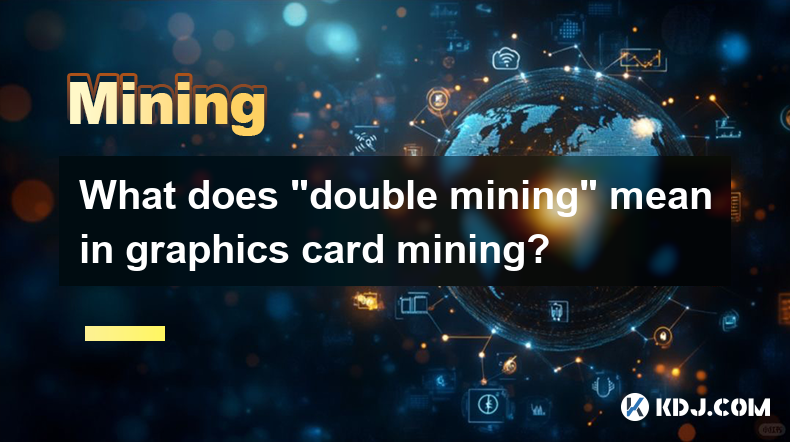
What does "double mining" mean in graphics card mining?
Apr 04,2025 at 08:35pm
In the world of cryptocurrency, the term 'double mining' refers to a specific technique used in graphics card mining to maximize the efficiency and profitability of mining operations. This method involves simultaneously mining two different cryptocurrencies using the same graphics card. The concept of double mining has gained popularity among miners who...

What is the market prospect of CPU mining currency?
Apr 04,2025 at 09:14am
The concept of CPU mining currency has gained traction in the cryptocurrency community due to its accessibility and potential for decentralization. Unlike GPU or ASIC mining, which often requires significant investment in specialized hardware, CPU mining can be performed using standard computer processors. This makes it an attractive option for individu...
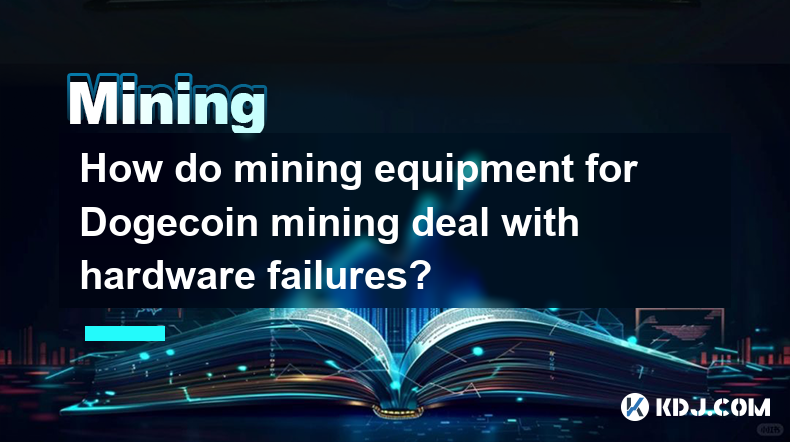
How do mining equipment for Dogecoin mining deal with hardware failures?
Apr 03,2025 at 09:15am
Dogecoin mining, like other forms of cryptocurrency mining, relies heavily on specialized hardware to perform the necessary computations to mine new coins. However, as with any technology, mining equipment can encounter hardware failures. This article will explore how mining equipment for Dogecoin mining deals with such failures, covering various aspect...
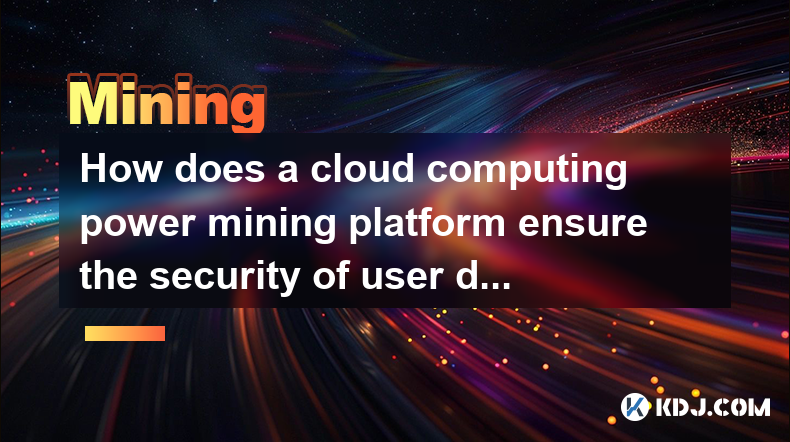
How does a cloud computing power mining platform ensure the security of user data?
Apr 04,2025 at 01:14am
In the realm of cryptocurrency, cloud computing power mining platforms have emerged as a popular solution for individuals and companies looking to mine digital assets without the need for expensive hardware. However, with the increasing use of these platforms, the security of user data has become a critical concern. This article delves into the various ...

How to tell if mining is still profitable?
Apr 03,2025 at 01:56pm
Determining whether cryptocurrency mining remains profitable involves assessing several key factors. Miners must consider the costs of electricity, the efficiency of their mining hardware, the current market price of the cryptocurrency being mined, and the mining difficulty. Electricity costs can vary significantly by location, and high costs can quickl...
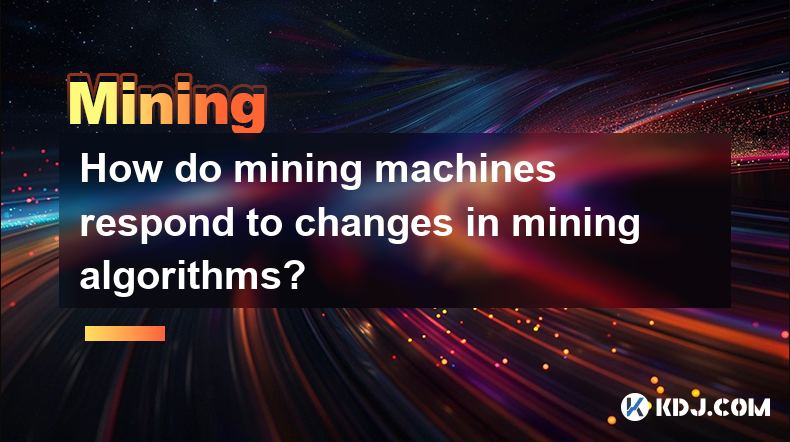
How do mining machines respond to changes in mining algorithms?
Apr 03,2025 at 07:07am
Mining machines are essential components of the cryptocurrency ecosystem, particularly for Proof of Work (PoW) blockchains like Bitcoin. These machines are designed to solve complex mathematical problems to validate transactions and add them to the blockchain. However, the algorithms that govern these mining processes can change, impacting the efficienc...

What does "double mining" mean in graphics card mining?
Apr 04,2025 at 08:35pm
In the world of cryptocurrency, the term 'double mining' refers to a specific technique used in graphics card mining to maximize the efficiency and profitability of mining operations. This method involves simultaneously mining two different cryptocurrencies using the same graphics card. The concept of double mining has gained popularity among miners who...

What is the market prospect of CPU mining currency?
Apr 04,2025 at 09:14am
The concept of CPU mining currency has gained traction in the cryptocurrency community due to its accessibility and potential for decentralization. Unlike GPU or ASIC mining, which often requires significant investment in specialized hardware, CPU mining can be performed using standard computer processors. This makes it an attractive option for individu...

How do mining equipment for Dogecoin mining deal with hardware failures?
Apr 03,2025 at 09:15am
Dogecoin mining, like other forms of cryptocurrency mining, relies heavily on specialized hardware to perform the necessary computations to mine new coins. However, as with any technology, mining equipment can encounter hardware failures. This article will explore how mining equipment for Dogecoin mining deals with such failures, covering various aspect...

How does a cloud computing power mining platform ensure the security of user data?
Apr 04,2025 at 01:14am
In the realm of cryptocurrency, cloud computing power mining platforms have emerged as a popular solution for individuals and companies looking to mine digital assets without the need for expensive hardware. However, with the increasing use of these platforms, the security of user data has become a critical concern. This article delves into the various ...

How to tell if mining is still profitable?
Apr 03,2025 at 01:56pm
Determining whether cryptocurrency mining remains profitable involves assessing several key factors. Miners must consider the costs of electricity, the efficiency of their mining hardware, the current market price of the cryptocurrency being mined, and the mining difficulty. Electricity costs can vary significantly by location, and high costs can quickl...

How do mining machines respond to changes in mining algorithms?
Apr 03,2025 at 07:07am
Mining machines are essential components of the cryptocurrency ecosystem, particularly for Proof of Work (PoW) blockchains like Bitcoin. These machines are designed to solve complex mathematical problems to validate transactions and add them to the blockchain. However, the algorithms that govern these mining processes can change, impacting the efficienc...
See all articles





















































































